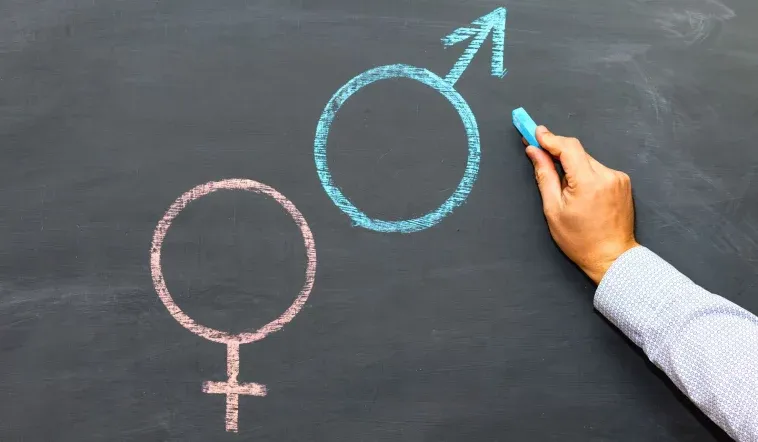(National Review) Gender” is not sex, and — per my own polling — most conservatives don’t quite know what the hell it is. This confusion unnecessarily complicates a fairly simple political issue. Perhaps this essay can help.
Sex is a binary and unambiguously real human trait, which goes well beyond the specific genitals that individuals have. The multiple essays on biologist Colin Wright’s invaluable website Reality’s Last Stand break this down in much greater detail, but biological sex is first and foremost a matter of reproductive function.
Among at the very least all placental mammals, a male is defined as a member of the sex that produces a large number of “small motile gametes” — sperm. A female is a member of the sex that produces a smaller number of larger and more individually valuable gametes — eggs. Whole systems of the human body correspond to these roles. Barring some terrible accident or genetic abnormality, women have fallopian tubes, a uterus and cervix, and ovaries while men make do with testicles, an internal prostate, Cowper’s glands, and so forth.
Determining the biological sex of most human beings is one of the least challenging tasks imaginable. In addition to reproductive function, the thing that defines sex, males and females are also different at the level of chromosomal ordering:
All males and no non-intersex females have at least one Y chromosome. More simply — as you may well have noticed during married life or the wild years beforehand — the external organs of well over 99 percent of people line up perfectly with their reproductive system, chromosomal order, and whatever their sex appears to be. “That’s a GIRL” is apparently one of the first sentences I said as a wee toddling lad — and I was correct.
Gender, which someone — Judith Butler, IIRC — once called “the performativity of sex,” is something else altogether. Crudely but accurately, a person’s “gender” is simply the average of the sex-based roles and stereotypes that they prefer or identify with.
A popular “gender chart” used in schools tracks from a bright pink female caricature on the leftmost (“feminine”) side over to a blue male warrior on the right: Actual pictures of Barbie and G.I. Joe are often added to each extreme. Many of the more formalized scales we use in the social sciences aren’t much better.
The idea underlying all of this is that how someone “scores” across the secondary traits that we associate with sex, for example liking boys’ clothes or the color blue, constitutes a distinct personal characteristic that is as important as sex itself.
In this context, an entirely female tomboy who prefers men’s button-down Oxfords and contact sports to pretty dresses and teas might — and this is no mere hypothetical — be told that she is “really a boy.”
A heterosexual male who greatly enjoys the company of women, but who has personality traits that are both traditionally female and stereotypically male, might identify as “nonbinary.” In this sense, there are an infinite number of genders, because there are an infinite number of individual personalities.
There are two major practical problems with this idea of “gender” as a distinct thing separate from sex. First, the results of anonymous survey questions designed by myself and others indicate that most citizens are deeply skeptical of the entire concept, viewing it as essentially nonsensical.
My recent public and anonymous ask of the question, “Do some women have penises (?),” which drew 3,051 votes and 55 reposts from online accounts across the political spectrum, produced the result: “1.8% Agree, 98.2% Dis-Agree.” Much more seriously, a very large-N recent study from Pew Research found considerable levels of skepticism toward gender ideology even among committed minority Democrats, with 41 percent of Hispanic Dems and fully 55 percent of African-American Democrats saying that “a person’s gender is determined by their sex at birth.” Less surprisingly, 80 percent of Republicans felt the same way.
More importantly, even accepting the existence of gender would not change the reality of biological sex — a point that leftists themselves used to make, before they temporarily gained the upper hand in this debate.
As we saw during U-Pennsylvania’s Lia Thomas’s recent first-place showing at the women’s national swimming championships, the fact that a six-foot-four male sincerely “identifies as a woman” does not at all change the fact that this person is a six-foot-four biological male — or change any of the factors that make it a best practice for the boys and the girls to swim in different heats.
Notably, the existence of vanishingly rare medical exceptions to the sex (not gender) binary does not alter this point at all. The real transgender question is not whether some tiny number of people with, say, Mosaic Syndrome exist, who obviously must be treated humanely and as full fellow citizens. The answer there is “sure.” Rather, it is whether a person who is a fully standard biological male can become a woman, in every sense of that term, by saying that he is one. To some extent, the answer there (“in every sense”) obviously has to be no.






